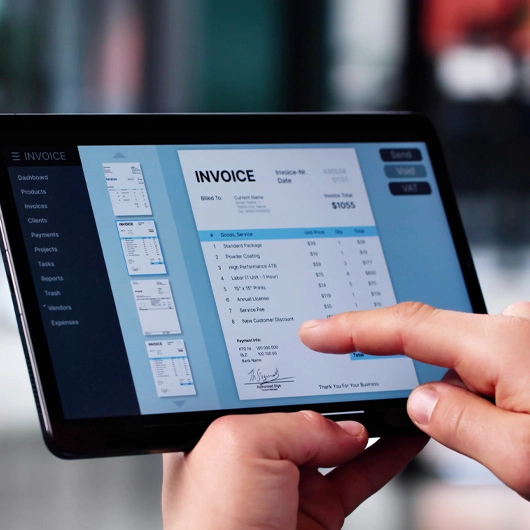How to Write an Effective Business Plan
How to Write an Effective Business Plan
Whether you are starting a new business or looking to strengthen the company you’ve already established, a well-thought-out business plan is an essential tool. This fundamental document, which generally includes financial, operational and marketing information, can provide a roadmap for running and growing your company, and provide potential investors and business partners with insight into the management and stability of your business.A 2020 QuickBooks survey asked business owners what advice they would give entrepreneurs starting new businesses. The top recommendation, cited by 69% of respondents, was to write a business plan. That’s not surprising when you look at all of the ways a solid business plan can support your efforts to build a successful enterprise. A well-written plan can help you:
- See the big picture and set priorities for your business
- Communicate a clear vision for the company
- Position your company/brand in the market
- Set, track and achieve essential business goals
- Understand and address your company’s financial needs
- Attract like-minded business partners
- Secure investment capital and loans
- Identify new opportunities for growth or expansion
What to include in your business plan
There are no hard and fast rules for developing a business plan, nor for determining how long it should be. Some business leaders spend days or even weeks working a document that may run 20 to 30 pages, while others produce a plan of five pages or less in a single afternoon. It all depends on the size and scope of your business, and your purpose for having a business plan. If you are looking to attract investors, for example, you may want to spend that extra time and include any detail you believe may help you tell your story.
As you prepare to create your own business plan, here are some common elements you may want to consider including:
Executive summary
The executive summary is your opportunity to share the purpose and priorities of your business succinctly. In addition to communicating your company’s value proposition and mission statement, this section should encapsulate the highlights of your business plan to set the stage for the details to come. (You may want to write this summary last, after you have determined all of the elements and details you will include in subsequent sections.)
Company description
Your company description should include basics, such as the company’s registered name and address, plus information that offers deeper insight into its structure and leadership team. Share key leaders’ bios. Provide greater detail into the purpose and strengths of your business. Talk about the type of consumers or companies your business serves and explain the needs you have set out to fulfill.
Business goals
Sharing your business goals and how you intend to achieve them is important to your short-term internal momentum — mobilizing your strategies and action plans — and helps give shape to longer-term initiatives. It also offers potential investors a view into your strategic mindset and drive to move the business forward.
As you develop goals for your business, keep the SMART acronym in mind:
- Specific: Clearly define each goal, ideally answering the 5 W questions: Who is involved? What do you want to achieve? Where will you work toward this goal? When would you like to achieve it? Why do you want to achieve it?
- Measurable: How will you measure progress toward each goal? Set quantifiable, trackable benchmarks.
- Achievable: Make sure each goal is realistic. Detail any challenges you face — e.g., lacking required resources or skills — and how you will overcome them.
- Relevant: Every goal you set should support your broader goals and vision for the company, whether contributing to the bottom line or strengthening some other aspect of the business.
- Time-bound: Set a target date so that everyone working toward the goal understands how to pace their progress.
Products and services
What products are you selling? What services do you provide? What type of customers do they appeal to and benefit? What specific benefits do these products and services offer? How do you deliver them? Be sure to include any research and development that is planned or underway, as well as any trademark or patent filings.
Market analysis
Information about the competitive market and your company’s place within it informs your marketing decisions and provides important context for your growth initiatives. If you have not done competitive research yet or if your research is dated, consider prioritizing that now. The better you understand market trends, opportunities and the competitive environment, the stronger your insights will be into how you can differentiate your brand and establish a leadership position.
Marketing and sales plans
This section explains how you approach, acquire and retain customers. It should include insights into your marketing activities — advertising, social media, public relations, etc.; customer loyalty and referral programs; the sales channels you intend to leverage; and other important aspects of your sales and marketing model.
Operations plan
How does your company run day to day? Your operations plan should shed light onto the logistics of hiring staff, building teams and managing various functions — procurement, shipping, inventory management, customer service, etc.
Financial analysis and projections
Financials may include past and present expenditures, cost projections and funding needs. It is common to include a financial outlook for the coming five years that includes balance sheets, income statements, cash flow statements and capital expenditure budgets. If you have already built a financial history with your business, you might also include these documents for the past three to five years. If you are looking to secure funding, listing the collateral you have to put up against a loan could be prudent as well.
Appendix
Provide relevant supporting materials — market data, historical analyses and the like — to back the assertions and projections you have presented in your plan. Depending on your intended audience and purposes, you may also want to include letters of reference, credit histories, product photos, resumes, licenses, patents and other legal documents.
Remember that your business plan is not meant to be written and filed away. It should be a living, breathing document that provides ongoing guidance for your company’s progress. Once you have your plan in place, use it as a working tool and set a schedule for reassessing, updating and adjusting its content bimonthly, quarterly or semiannually.
This article is for general information purposes only and is not intended to provide legal, tax, accounting or financial advice. Any reliance on the information herein is solely and exclusively at your own risk and you are urged to do your own independent research. To the extent information herein references an outside resource or Internet site, Dollar Bank is not responsible for information, products or services obtained from outside sources and Dollar Bank will not be liable for any damages that may result from your access to outside resources. As always, please consult your own counsel, accountant, or other advisor regarding your specific situation.
Posted: July 22, 2022




